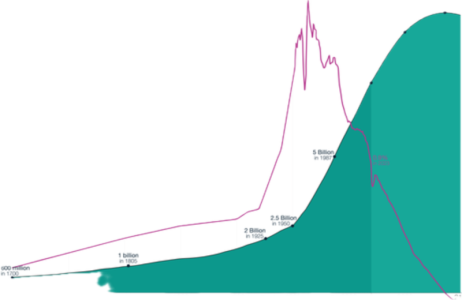The declining birthright is more complex than this. The United States has been below replacement rate since the 70s, and this pattern is seen in many industrialized countries today. Many demographers today say that the data shows that the world is a whole has probably reached replacement level. For highly industrialized countries it does have to do with the economy, but has more to do with options available to women. Female Education levels, access to contraception, the ability to work outside of the home, the ability to own property, percentage of the population living in urban areas, and participation in government have all led to lower birth rates.
If you extend this graph out a little bit, what you’ll see is that most demographers think the world will reach replacement somewhere around the year 2100 and somewhere between 10 and 11 billion people. Obviously there is some flexibility with this. China, has probably already met its highest population, and is on the decline now. This will be true for a number of other countries also. it will be interesting to see what happens going forward with the immigration rate to the United States, as our immigration policy has created the population growth. It has also enabled us to keep a better worker to dependency ratio. Japan, which has very very restrictive immigration, is having significant issues with their economy, as they’re just aren’t enough workers, and without a change in the policy, they will continue to be not enough workers. Japan was surpassed by China as the world’s second largest economy about 15 years ago, and will probably be surpassed by Germany and India in the not too distant future. They aren’t the only ones in this predicament, though. And if the United States actually created a policy where all immigration stopped, we would find ourselves in some economic challenges.
View attachment 925409
